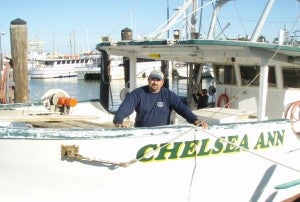This is a re-post of a National Geographic Blog posted by Miguel Jorge of National Geographic’s Ocean Initiative on November 20, 2012
Bubba Cochrane always knew he wanted to be a fisherman. So, despite concerns from his family, he began his career as a deck-hand and eventually saved enough to buy a permit and boat of his own. He’s 43 years old now and owns a commercial fishing business out of Galveston, Texas. Business is good – but he can easily remember what fishing used to be like.
“When I got started, fishing was a race: when the season opened we fished every day until we were notified that the quota was caught. That meant lots of fishing all at once, a glut of fish in the market, and bad prices when we got back to the docks,” said Bubba, reminiscing about his early days in the fishery.
Through the mid-2000s, the red snapper fishery was on the brink of collapse. Even with so few fish in the population and a short season, the fishing derbies meant that the price at the dock stayed low, hurting the profits of commercial fishermen. Fishery managers tried to address the price problem by breaking up the season into the first 15, then 10 days of each month. Fishermen would fish for 10 days, and then wait until the next month to go out again.
These sporadic openings were not the solution fishermen like Bubba wanted. “It’s hard to run your business in just the first 15 days of a month; a lot can get in the way. I tell people to imagine a gas station only being able to sell gas for the first ten days of each month or a contractor only being able to build houses in that short window.”
The pressure on Bubba’s business and his way of life was intense. “A derby is really stressful – you’re worried about the weather or if you get sick or even hurt. And it means you miss a lot of birthdays and holidays with your family, because when fishing is open you’d better be on the water.”
In the derby fishery, being safe was a luxury Cochrane could not afford. “Good weather was a bad thing. If the weather was good, the price was bad because everyone was fishing.”
This all changed in 2007, when the commercial red snapper fishery implemented an individual fishing quota (IFQ) program, a form of catch share.
Fisheries in the United States are managed under a system called catch limits. A catch limit is a scientifically-based cap on the number of fish that can be harvested from a fishery each year in order to keep the stock healthy for future seasons. Catch share programs, at its most basic, give exclusive fishing rights to commercial fishers to harvest a specific percentage of the total catch limit. When a boat hits its individual quota for the year, it has to quit fishing unless it is able to lease or buy quota from another boat in the same fishery. Catch shares take the pressure to race to catch fish off of the commercial fishermen, letting them fish their quota year-round. In turn, it stabilizes the price of their catch and gives them the power to make business decisions that are best for them (instead of being hostage to a limited open season).
For Bubba it sounded like another band-aid that wouldn’t solve the problem. That was until he attended a workshop to learn about how catch shares work. “I was worried about being able to catch enough. Then I learned you could buy and lease quota.” Bubba was able to find a seller and purchased more quota for his business.
“Because the price has stabilized and even increased from before the IFQ, I’m making more for my catch and spending less to catch it, because I’m not always racing to go out.”
Since the implementation of the catch share program in the commercial red snapper fishery, the value of the commercial fishery has gone up 150 percent. Reports from other fishermen echo Bubba’s – they are making more and spending less to catch fish.
For conservation, the results are clear. The fish population has increased enough to warrant a 60 percent increase in the catch limit. Discarded or wasted fish have been reduced dramatically. Because commercial fishermen can catch red snapper year-round, they are throwing less overboard. That means more fish in the ocean for commercial and recreational fishermen.
“Catch shares taught me about stewardship. I know what sustainability means and I believe in it,” said Cochrane. “There’s a future for the fishery. Most older fishermen would have never let their kids get into fishing. I have a nine-year-old son; before the IFQ I would have pushed him from fishing, now I’m encouraging him to become a fisherman some day.”
Click here to learn about how National Geographic’s Ocean Initiative is helping to identify and support individuals and organizations that are using creative and entrepreneurial approaches to marine conservation.










